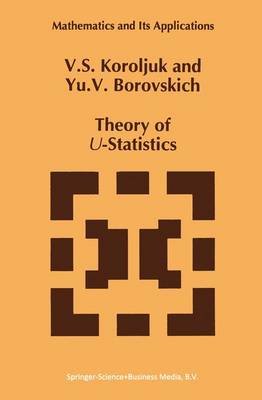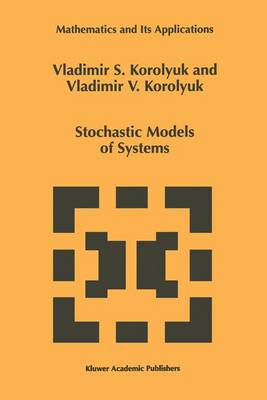Mathematics and Its Applications
2 primary works
Book 273
The theory of U-statistics goes back to the fundamental work of Hoeffding [1], in which he proved the central limit theorem. During last forty years the interest to this class of random variables has been permanently increasing, and thus, the new intensively developing branch of probability theory has been formed. The U-statistics are one of the universal objects of the modem probability theory of summation. On the one hand, they are more complicated "algebraically" than sums of independent random variables and vectors, and on the other hand, they contain essential elements of dependence which display themselves in the martingale properties. In addition, the U -statistics as an object of mathematical statistics occupy one of the central places in statistical problems. The development of the theory of U-statistics is stipulated by the influence of the classical theory of summation of independent random variables: The law of large num bers, central limit theorem, invariance principle, and the law of the iterated logarithm we re proved, the estimates of convergence rate were obtained, etc.
Book 469
Stochastic Models of Systems
by Vladimir S. Korolyuk and Vladimir V. Korolyuk
Published 28 February 1999
In this monograph stochastic models of systems analysis are discussed. It covers many aspects and different stages from the construction of mathematical models of real systems, through mathematical analysis of models based on simplification methods, to the interpretation of real stochastic systems.
The stochastic models described here share the property that their evolutionary aspects develop under the influence of random factors. It has been assumed that the evolution takes place in a random medium, i.e. unilateral interaction between the system and the medium. As only Markovian models of random medium are considered in this book, the stochastic models described here are determined by two processes, a switching process describing the evolution of the systems and a switching process describing the changes of the random medium.
Audience: This book will be of interest to postgraduate students and researchers whose work involves probability theory, stochastic processes, mathematical systems theory, ordinary differential equations, operator theory, or mathematical modelling and industrial mathematics.
The stochastic models described here share the property that their evolutionary aspects develop under the influence of random factors. It has been assumed that the evolution takes place in a random medium, i.e. unilateral interaction between the system and the medium. As only Markovian models of random medium are considered in this book, the stochastic models described here are determined by two processes, a switching process describing the evolution of the systems and a switching process describing the changes of the random medium.
Audience: This book will be of interest to postgraduate students and researchers whose work involves probability theory, stochastic processes, mathematical systems theory, ordinary differential equations, operator theory, or mathematical modelling and industrial mathematics.

